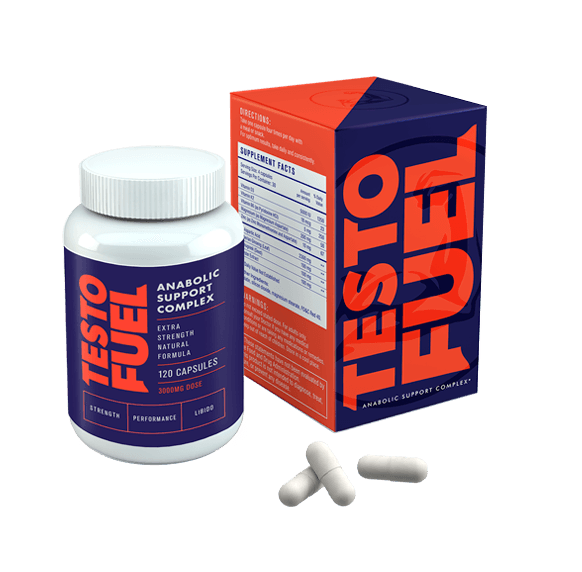A Man’s Guide to Muscle Building Workout Plan
Turn your body into a barbell-bending, muscle building machine with this best workout plan and guide for men
The journey to a more muscular, stronger body that showcases athleticism, lean power and stamina can be difficult.
Let’s be right; muscle building isn’t easy.
If you’re a regular lifter who wants to take their physique to the next level, this workout is for you.
In this comprehensive guide we give you all the tools you need to completely transform your physique in as little as 12 weeks.
It’s a workout program designed to maximize muscle growth.
You’ll ramp up your power, strength and get lean too – but this is all about muscle mass right here.
What does this program over?
| Goal: | Fat loss |
| Aimed at: | Intermediate and advanced men |
| Program duration: | 12 weeks |
| Workout duration: | 45-60 minutes |
| Equipment needed: | Barbell, dumbbell, resistance machines |
The Best Muscle Mass Building Program
You’re here because you’ve already graduated from weight lifting for muscle mass 101.
You’ve been training for over a year now and the progress have gone well.
You’re already fairly lean and you’re at a point where a basic muscle mass building program just isn’t pushing you anymore.
In this intermediate to advanced level lifting program we’re looking at taking the dial right up to maximum mass as you implement more complex lifting methods into your arsenal.
It’ll be tough.
But worth it.
You’ll be targeting every muscle fiber and using every trick in the book as you escape the shackles of basic training, and fully embrace real weight lifting with a thick-armed bear hug.
Here’ what you’ll achieve in 12 weeks of tough training:
- Maximize muscle mass with advanced protocols
- develop power and strength that the pro’s would be proud of
- Shred body fat and carve out a lean, athletic physique
- Improve overall performance
Using this workout plan to build more muscle mass
When it comes to making the most out of a structured exercise program you have to be honest with yourself.
This is a program designed for those that have trained regularly for at least 1-2 years.
It’s easy to be over-eager, highly motivated and just that little bit too impatient.
If you don’t consider yourself to be at an intermediate or advanced level yet you can try our Muscle Building Program for Beginners – a slingshot program designed to get you from a standing start to a muscular, intermediate level in the shortest time possible.
But if you’ve spent time in the trenches and you’re both physically and psychologically prepared for an intense, all-out assault on your body then you’re in the right place.
Muscle Building Workout Plan: What to Expect
Dramatic muscle transformations don’t happen overnight.
And at an advanced level you’ll need to work even harder to develop the show-ready physique you’re after.
As a beginner, the mere thought of weight lifting can add muscle mass to your frame. Well, not quite, but when you’re new to strength training for muscle mass it’s definitely easy to progress quickly.
The law of diminishing returns suggests that as a beginner you’ll make greater progress.
As your body adapts to the stimulus of weight training you have to work harder and present it with more novel stimuli for it to continue to develop.
When you were a beginner you might have noticed that you packed on muscle pretty quickly. But as you got more experienced, the rate of growth began to slow down.
That’s completely normal.
And that’s the purpose of this workout plan – to break the barriers and kick start real muscle growth fast.
How much muscle can you expect to add with this workout plan?
Exact amounts of muscle gain are always difficult to pitch. That’s becuase genetics, effort, diet and lifestyle also come into play.
If you’re a natural athlete and wanting to know exactly how much muscle you can pack on, then a rough guide would be somewhere between 0.5 pounds per month if you’ve trained for more than 3 years.
Any less than that and it could be as high as 2 pounds per month.
Here’s a rough guide:
| Experience | Years of training | Muscle growth |
| Beginner | 0-1 years of training | 1-1.5% of total body weight per month |
| Intermediate | 2-5 years of training | 0.5-1% of total body weight per month |
| Advanced | 5 or more years of training | 0.25-0.5% of total body weight per month |
Muscle Gain Workout Plan: Unlocking Maximum Mass
Let’s cut the bull.
You’re here to get jacked.
Plain and simple.
But before you jump feet first into the pool of gains we need to go through the essentials of advanced level mass and strength.
While we don’t want this to turn into a science lecture, it’s well worth investing some time in learning these essential elements of training. After all, the great bodybuilders, athletes and sportspeople all understand exactly how training helps them progress.
You should be the same.
Here are the rules you should apply when building advanced mass and strength:
Get strong; build more muscle
As the old saying goes, “there are no bad points to being strong”.
Focusing on getting stronger gives your body no option than to protect itself by building more lean tissue.
Using progressive overload is a surefire way of breaking the barriers to muscle mass. This is simply a process by which you challenge your body with weights that take your body to fatigue.
Applying principles of progressive overload to your weight training workouts forces your body to adapt by providing a consistent stimulus that it’s unaccustomed to.
Your aim is to lift as heavy as you can within your rep range for every set and every exercise.
If you’re asked to choose a weight for 6-10 reps and you can crank 11 or more good reps out, it’s far too light. The idea is to go heavy and reach fatigue between these numbers.
Stick to that weight each workout until you can do more than your rep range.
And at that point, increase the weight.
Key Point: Apply progressive overload to your training. If you don’t maximize the stimulus, the adaptation will be less than optimal.
Combine load and volume to ramp up your gains
By now you’ll understand the value of lifting heavy.
What you might not realize though is that over the last few years there’s been a ton of research done on volume load – this is not just how much you lift, but how many times you liftit.
And what the studies tell us so far is that higher volume load means greater muscle building.
The primary driver of hypertrophy is volume.
Load lifted x number of reps x number of sets
What does this mean?
Multiple, heavy sets are best for muscle building growth.
Both individual clinical trials and larger meta-analyses show that for any given exercise, the more reps you complete at progressive overload, the greater gains.
Multiple sets can provide as much as 40% more muscle mass when compared to single set workouts [1].
Key Point: Higher volume loads result in greater muscle building gains. Employing multi-set protocols will optimize your results.
Use compound and isolation exercises to optimize muscle and strength building
As a beginner you’re told to focus on the big lifts – presses, pulls, squats and deadlifts.
And rightly so.
Not only do they ramp up your strength and athleticism; they build huge mass too.
But you’re at a more advanced levels now and will have to use more than your core lifts to etch out more mass.
- Compound exercises – you still need to prioritize large, multi-muscle exercises as they undoubtedly add muscle building and strength. However, these require optimal co-ordination during each lift and can therefore be extremely fatiguing for your nervous system. Using them early in a workout while fresh works best.
- Isolation exercises – single-joint lifts are great for bringing up lagging muscles, helping to create more focused symmetry and balance between smaller muscle groups, and giving optimal results in higher rep ranges.
Using both heavy compounds with long rest times and short-recovery isolation exercises gives your body every opportunity to adapt, lay down some new muscle and grow.
Key Point: Combining compound and isolation exercises in your strength program optimizes muscle building results.
Use advanced protocols to boost load-volume
Experts on muscle hypertrophy agree that you have to present your body with a novel stimulus to build muscle.
A novel stimulus is one that your body isn’t used to. Changing the way in which you progressively overload your muscles can lead to better results.
- Use a different rep range or number of sets
- Changing your exercise selection to hit each muscle from a different angle
- Change the tempo of each exercise
Now, don’t get this mixed up with the idea of ‘muscle confusion’.
You can’t perform a different workout each day to somehow ‘trick’ your muscles into more growth.
But regularly adapting the variables of strength training will significantly accelerate your results.
Various advanced protocols take advantage of different rep ranges and volume loads to smash away at your muscles. These include pyramids, tri-sets, high-intensity resistance training, giant sets and supersets.
Key Point: using advanced lifting protocols to present your body with a novel stimulus helps to drive muscle growth.
Mass Building Workout Program
This 12 week program has been split into 2 distinct phases, each one with its own mini-goal.
We’ve kept the exercise choices simple.
That way, we know your gym will have the equipment you need.
Every single facet of your workouts has been calculated with the precision that only an experienced and knowledgeable team of coaches and scientists can conjure up. It finds a unique way of growing new muscle.
Phase 1: Weeks 1-4
This phase acts as a transitional primer.
We’ve no idea exactly how conditioned you’ll be coming into this advanced workout schedule so we’re using this first four weeks as an intermediate level, muscle gaining push-legs-pull plan.
The loading ranges will guarantee muscle building as volume is high.
Rest times and rep ranges are based on individual exercises, with compound lifts being heavier and having longer recovery periods in comparison to single-joint lifts.
| Number | Session 1 | Session 1 Volume | Session 2 | Session 2 Volume | Session 3 | Session 3 Volume |
|---|---|---|---|---|---|---|
| 1 | DB Bench press | 4 x 6-10 3 minutes rest | BB Squat | 4 x 6-10 3 minutes rest | T-bar row | 4 x 6-10 3 minutes rest |
| 2 | DB Flyes | 4 x 10-15 1 minute rest | Leg press | 4 x 10-15 1 minute rest | Pulldown | 4 x 6-10 3 minutes rest |
| 3 | Weighted dips | 4 x 6-10 3 minutes rest | DB Romanian deadlift | 4 x 6-10 3 minutes rest | Seated neutral grip row | 4 x 10-15 1 minute rest |
| 4 | DB Shoulder press | 4 x 6-10 3 minutes rest | Leg extension | 4 x 10-15 1 minute rest | DB shrug | 4 x 6-10 3 minutes rest |
| 5 | DB Lateral raise | 4 x 10-15 1 minute rest | Lying leg curl | 4 x 10-15 1 minute rest | EZ bar curl | 4 x 6-10 3 minutes rest |
| 6 | DB Decline skullcrusher | 4 x 6-10 3 minutes rest | DB Standing single leg calf raise | 4 x 6-10 3 minutes rest | Seated DB hammer curl | 4 x 10-15 1 minute rest |
| 7 | Cable triceps extension | 4 x 10-15 1 minute rest | Seated calf raise | 4 x 10-15 1 minute rest | BB Reverse curl | 4 x 10-15 1 minute rest |
Phase 2: Weeks 5-12
In phase 2 you’ll be adding in one more workout per week.
You’ll also be dangling in some of the advanced protocols too, teasing your muscles into greater muscle growth and strength.
If you see your program laid out as ‘D1, D2’ for example, it means you complete both exercises back-to-back as a superset. If it says D1, D2, D3 then you’ll complete as a tri-set by performing all 3 exercises back-to-back without rest.
All other exercises are done on their own.
Day 1
| Number | Session 1 | Session 1 Volume |
|---|---|---|
| A1 | DB Bench press | Descending pyramid 2 x 4-6, 1 x 6-8, 1 x 8-10 |
| B1 | DB Flyes | 4 x 10-15 1 minute rest |
| C1 | Weighted dips | 4 x 6-10 3 minutes rest |
| D1 | DB Shoulder press | 4 x 8-10 |
| D2 | DB Lateral raise | 4 x 8-10 1 minute rest |
| E1 | DB Decline skullcrusher | 4 x 6-10 3 minutes rest |
| F1 | Cable triceps extension | 4 x 10-15 1 minute rest |
Day 2
| Number | Session 2 | Session 2 Volume |
|---|---|---|
| 1 | BB Squat | Descending pyramid 2 x 4-6, 1 x 6-8, 1 x 8-10 |
| 2 | Leg press | 4 x 10-15 1 minute rest |
| 3 | DB Romanian deadlift | 4 x 6-10 3 minutes rest |
| 4 | Leg extension | 4 x 10-15 1 minute rest |
| 5 | Lying leg curl | 4 x 10-15 1 minute rest |
| 6 | DB Standing single leg calf raise | 4 x 6-10 3 minutes rest |
| 7 | Seated calf raise | 4 x 10-15 1 minute rest |
Day 3
| Number | Session 3 | Session 3 Volume |
|---|---|---|
| A1 | T-bar row | 4 x 6-10 3 minutes rest |
| B1 | Pulldown | Descending pyramid 2 x 4-6, 1 x 6-8, 1 x 8-10 |
| C1 | Seated neutral grip row | 4 x 10-15 |
| C2 | Cable straight arm row / scapula retraction | 4 x 8-10 3 minutes rest |
| D1 | EZ bar curl | 3 x 8-10 |
| D2 | Seated DB hammer curl | 3 x 8-10 |
| D3 | BB Reverse curl | 3 x 8-10 3 minutes rest |
Day 4
| Number | Session 2 | Session 2 Volume |
|---|---|---|
| A1 | BB Front squat | 4 x 6-10reps |
| B1 | DB Step-up | 3 x 8-10 per side |
| B2 | DB Alternate lunges | 3 x 8-10 per side |
| B3 | DB Single leg Romanian deadlift | 3 x 8-10 per side 3 minutes rest |
| DB Standing single leg calf raise | 3 x 8-10 per side | |
| 5 | Seated calf raise | 3 x 8-10 per side |
| 6 | Cycle crunches | 3 x 15-20 per side |
| 7 | Table top crunch | 3 x 15-20 |



